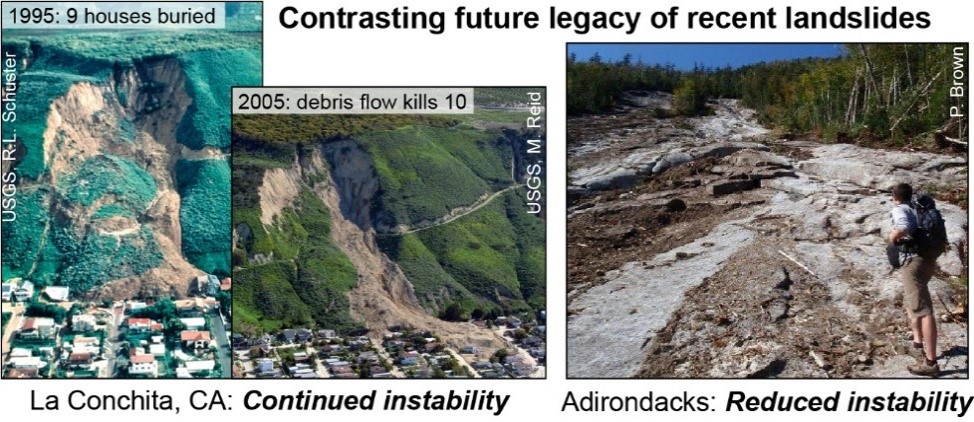
Legacy is about fundamental questions of how landslides shape the landscape and how geologic, biotic, and climatic setting, in turn, impact landslide style and provide clues about present day landslide hazards. Analysis and modeling will be applied at watershed (~10-100 km2) scales over geomorphic, up to a million-year time scales. Legacy will provide the baseline dynamics of landsliding (location, frequency, magnitude) and sediment yields, corroborated with geologic evidence, and considering inherent uncertainties of materials, climate, and model parameters.
For this research thrust, we identify four fundamental questions that illuminate key knowledge gaps in the ability to link long-term geologic legacy to modern landslide hazards:
Legacy Q1: How is information about landslide style (size, depth, runout) preserved in high-resolution topography? (i.e., can we predict whether landslides will be shallow or deep-seated based on topographic patterns alone?) Figure 5 illustrates how dramatically different topography can be in different landslide-prone areas. These differences are signatures of the dominant processes in the areas.
Legacy Q2: For the common mechanism of shallow soil landsliding in convergent hollows, how well can differences in rainfall intensity-duration thresholds be quantified as a function of geologic setting? (i.e., based on drainage density, grain size, soil properties, and vegetation type etc.)
Legacy Q3: How does the geologic/climatic setting influence the future trajectory of recent landslides? Does landslide hazard increase due to the surface presence of weathered rock/quasi-stable landslide deposits? Does landslide hazard decrease due to decreased sediment availability? The relative importance of these factors likely depends on soil/weathered bedrock properties, characteristic landslide size/depth, and hillslope/channel connectivity.
Legacy Q4: How do ecohydrologic vegetation dynamics and stochastic arrivals of wildfires control landslide type, frequency, and locations in different climatic and geologic settings?
